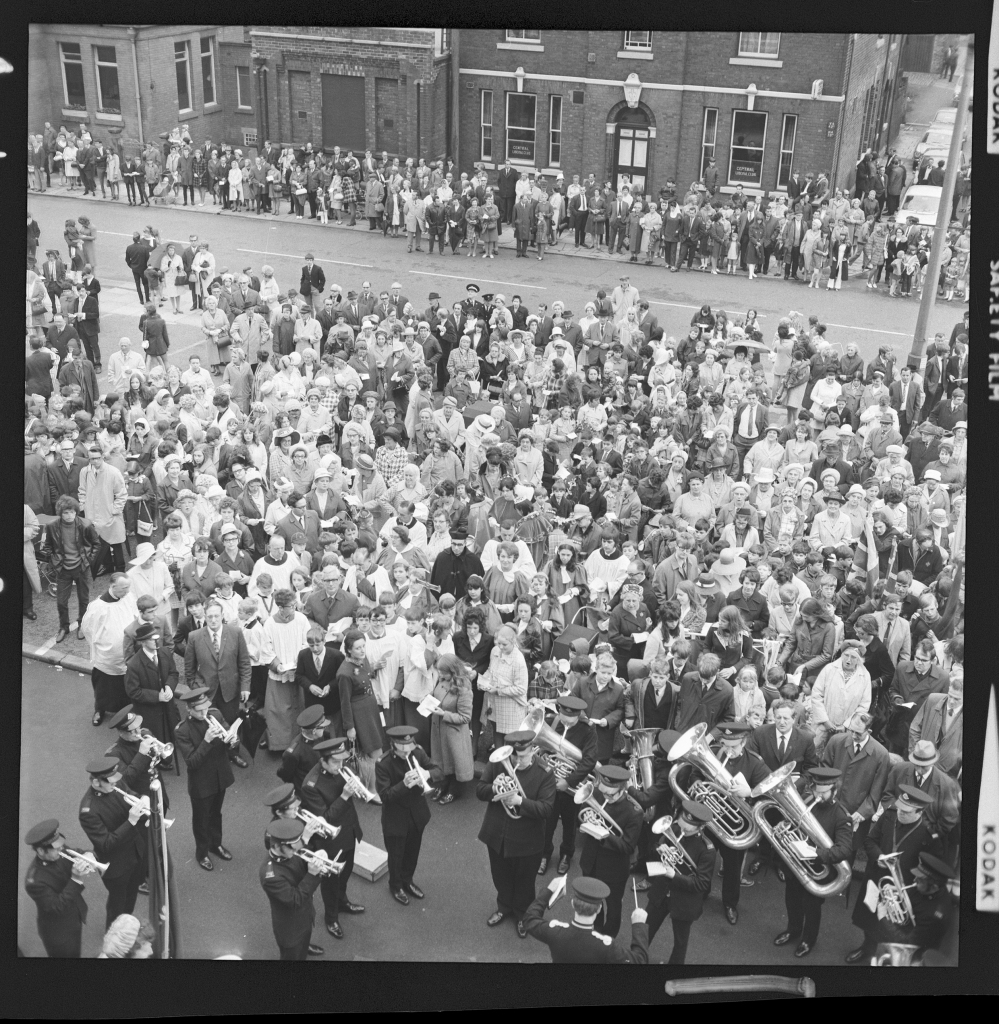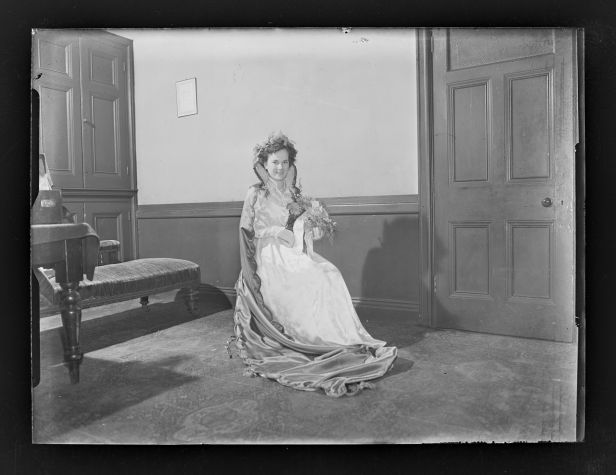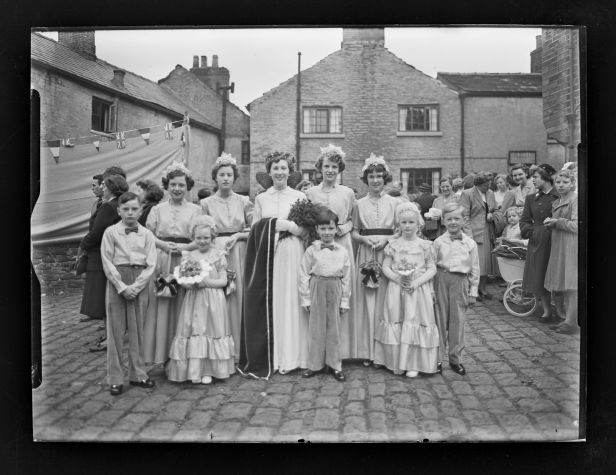As our volunteers work continue working on the Smile! Tameside project adding descriptions to the digitised images, they are also highlighting interesting stories that they find. Volunteer Meg Gain writes about the many images of Rose Queens she has found, and of her own experience of being a Rosebud.

Whit Walks
The Whit Walks were an annual event, most common in North West England. Dating back to 1821, local churches or chapels would parade down the street behind huge banners, dressed in finery carrying baskets of flowers. The procession followed a brass band with brass band contests also take place at this time. Some churches still hold their ‘walk of witness’ but they are mere shadows of the processions that were held back in the 1950s.

Whit comes from the word white, and Whitsun and Whit Friday were big occasions in the church calendar, with crowds turning out to line the route of the procession. It was also the time when you had new clothes and visited relatives to show them off, then pocket a penny or, if you were lucky, a silver thruppenny bit. If you had been chosen as the Rose Queen or part of her party, it was even more special.

Our ‘Walk’ from Waterloo Methodist chapel was on the morning of Whit Friday when we processed behind the large banner or the smaller Sunday School banner around the streets, culminating at the War Memorial where we joined Taunton Sunday school for a joint service. A brass band headed the procession and the Boys’ Brigade with their buglers were also there to provide musical accompaniment.
Rose Queen
The current Rose Queen and her party, who were called Rosebuds, were always part of the procession. A young lady, aged between about 15 and 20, had been chosen earlier in the year by the congregation or elders of the chapel to be Queen for the year. Her Rosebuds were younger children who walked behind the Queen in pairs. Small boys held her train, and another boy walked in front as the cushion-bearer.

The aim of having a Rose Queen was primarily to build community by encouraging families to work together to raise funds for the church or chapel. The Rose Queen and her party would visit other chapels in the Methodist circuit to take part in their ‘At Home’ sessions. These were tea-parties hosted by that chapel’s Rose Queen.
I used to think Rose Queens were linked only to Methodist chapels but I’ve since discovered that they were also common to Church of England and Roman Catholics churches with walks happening on Whit Friday and Whit Monday too.
I was a Rosebud in about 1952 when Jean Bowring was chosen as Rose Queen for that year at Waterloo Methodist chapel. I can remember the dress I wore, pale green with frills and puff sleeves and a little jaunty head-dress with ribbons tied under the chin. We walked behind the Rose Queen in the Whit Walks procession and visited other Rose Queens in the area.

Memories
When I asked for people’s recollections on the ‘Ashton Under Lyne Now and Then Facebook group’, I received 110 responses, many including treasured photos of Rose Queens from St James’, St John’s Hurst, Stamford Street Methodist, St Ann’s RC, St Christopher’s RC, St Peter’s, Ormonde Street Methodist, Taunton Methodist and Christ Church. Many remembered the ‘At Homes’ standing around in draughty church halls whilst boring speeches went on and processing in the Whitsuntide Walks.
The Smile! Tameside Project is continuing with volunteers working remotely to help catalogue the images from the Reporter Photograph Collection. As the work progresses, we will be adding some of the images to our Flickr site where you can help us with missing information and also tell us your stories, share your photographs and memories of events. Pleae get in touch if you have a story to contribute and keep an eye on this site for news of the project as we progress, and for links to all our social media sites which are on the top right of this page.
